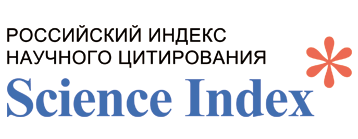ISOLATION OF GALLIC ACID FROM LINOSYRIS VILLOSA PLANT, SYNTHESIS OF ITS DERIVATIVES AND STUDYING THEM FOR ANTIMICROBIAL ACTIVITY
Keywords:
Linosyris Villosa plant, gallic acid, dibromogallic acid, dinitrogallic acid, antimicrobial activityAbstract
The research focuses on finding cheap, eco-friendly antibacterial agents based on local plant materials. Gallic acid and its derivatives were selected as objects of biological active substances of plant raw materials. The aim of this work was to isolate Gallic acid from the Linosyris villosa plant growing in the north of Kazakhstan and to obtain dibromogallic acid and dinitrogallic acid on its basis. The structure of the obtained compounds was proved using thin-layer chromatography, measuring the melting point and the method of IR spectroscopy. Gallic acid and its derivatives, dinitrogallic and dibromogallic acid, were studied for antimicrobial activity against Escherichia coli, Staphylococcus aureus, dysentery bacillus, Salmonella. The study of Gallic acid and its derivatives: Dibromogallic and Dinitrogallic acids for antimicrobial activity showed that Gallic acid does not exhibit antimicrobial effect, while dinitrogallic acid has an antimicrobial effect only on solid media (meat-peptone agar) and is inactive in a liquid nutrient medium. The best indicators of antibacterial activity were shown by Dibromagallic acid solutions: a complete cessation of the pathogenic bacteria colonies growth on solid media and lysis of the studied cultures of microorganisms in a liquid nutrient medium were observed.
References
[1] Cox G., Wright G.D. Intrinsic antibiotic resistance: mechanisms, origins, challenges and solutions / /Int. J. Med. Microbiol. 2013. № 303. Р. 287-292.
[2] Davies J., Davies D. Origins and evolution of antibiotic resistance // Microbiol. Mol. Biol. Rev. 2010. № 74. Р. 417-433.
[3] Gull I., Sohail M., Aslam M.S. Phytochemical, toxicological and antimicrobial evaluation of Lawsonia inermis extracts against clinical isolates of pathogenic bacteria // Ann. Clin. Microbiol. Antimicrob. 2013. № 12: 36.
[4] Gonzalez-Lamothe R., Mitchell G., Gattuso M., Moussa S., Malouin D.F., Bouarab K. Plant antimicrobial agents and their effects on plant and human pathogens // Int. J. Mol. Sci. 2009. № 10. Р. 3400-3419.
[5] Baym M., Stone L.K., Kishony R. Multidrug evolutionary strategies to reverse antibiotic resistance // Science. 2016. № 351: 6268.
[6] Halama P., Haluwin Ch.Antifungal activity of lichen extracts and lichenic acids // BioControl. № 49(1). Р. 95-107.
[7] Abuiraq L., Kanan G., Wedyan M.,El‐Oqlah A. Efficacy of extracts of some lichens for potential antibacterial activity // Res. J. Pharm. Biol. Chem. Sci. 2015. № 6. Р. 318-331.
[8] Udvardy A., Miskovics A., Sipos A. A perspective on the anti-infective activity of Goldenseal (Hydrastis Canadensis) and its contribution to the development of multidrug pump inhibitors // International Bulletin of Drug Research. 2015. № 5(8). Р. 1-11.
[9] Phuong M.L., McCooeye M., Windust A. Characterization of the alkaloids in goldenseal (Hydrastis canadensis) root by high resolution Orbitrap LC-MSn // Anal. Bioanal. Chem. 2013. № 405. Р. 4487-4498.
[10] Newton S.M., Lau C., Gurcha S.S., Basra G.S., Wright C.W. The evaluation of forty-three plant species for in vitro antimycobacterial activities; isolation of active constituents from Psoralea corylifolia and Sanguinaria Canadensis // J. Ethnopharmacol. 2002. № 79. № (1). Р. 57-67.
[11] Walsh C. Opinion - anti-infectives: where will new antibiotics come from? // Nat. Rev. Microbiol. 2003. № 1(1):65.
[12] Edwin H. Natural polyphenols (vegetable tannins) as drugs: possible modes of action // J. Nat. Prod. 1996. № 2. Р. 205-215.
[13] De Smet P.A. The role of plant-derived drugs and herbal medicines in healthcare // Drugs. 1997. № 54. Р. 801-840.
[14] Kamal G.M., Gunaherath B. Plant Steroids: Occurrence, Biological Significance, and Their Analysis. https://onlinelibrary.wiley.com/
[15] Barbehenn R.V., Constabel C.P. Tannins in plant–herbivore interactions // Phytochemistry. 2011. Vol. 72. Issue 13. P. 1551-1565.
[16] Mustafa N.R., Verpoorte R. Phenolic compounds in Catharanthus roseus // Phytochem. Rev. 2007. № 6. Р. 243-258.
[17] Jaakola L., Hohtola A. Effect of latitude on flavonoid biosynthesis in plants // Plant, cell & environment. 2010. Vol. 33, № 47. P. 1239-1247.
[18] Fitzpatrick L.R., Woldemariam T. Comprehensive Medicinal Chemistry III. Chapter 5.16.4.5 Gallic Acid. Elsevier, 2017. 4536 p.
[19] Nayeem N., SMB A., Salem H., Ahel-Alfqy S. Gallic Acid: A Promising Lead Molecule for Drug Development // Journal of Applied Pharmacy. 2016. № 8: 2.
[20] Tyukavkina N.A. Organicheskaya himiya. Kn 2. M.: Drofa, 2008. 592 p.

















